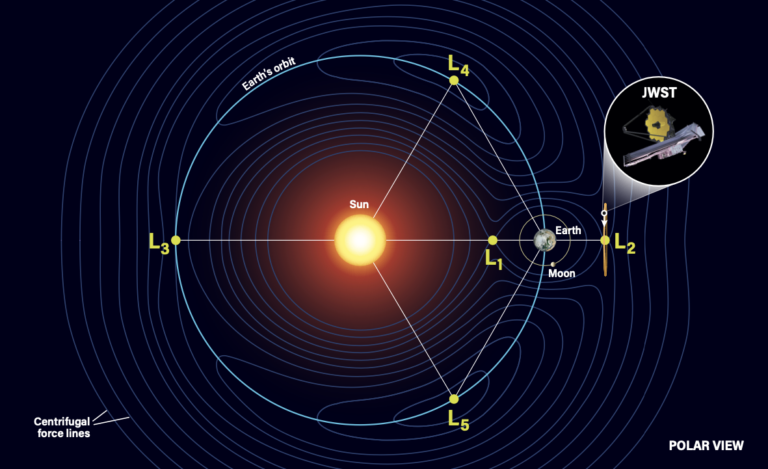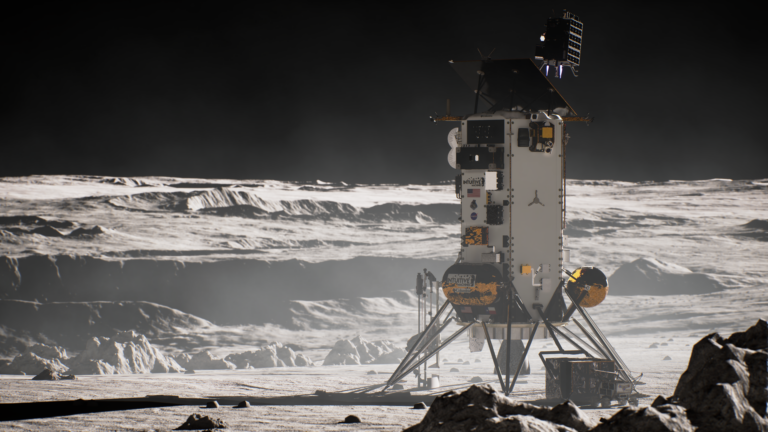Mars probably is not a terrestrial planet like Earth, which grew to its full size over 50 to 100 million years via collisions with other small bodies in the solar system, said Dauphas.
“Earth was made of embryos like Mars, but Mars is a stranded planetary embryo that never collided with other embryos to make an earthlike planet,” Dauphas said. The new work provides supporting evidence for this idea, which was first proposed 20 years ago on the basis of planetary growth simulations.
The new evidence likely will change the way planetary scientists view Mars, said Pourmand. “We thought that there were no embryos in the solar system to study, but when we study Mars, we are studying embryos that eventually made planets like Earth.”
There had been large uncertainties in the formation history of Mars because of the unknown composition of its mantle, the rock layer that underlies the crust. “Now we can shrink those uncertainties to the point where we can do interesting science,” Dauphas said.
Hafnium-Tungsten Chronometer
Dauphas and Pourmand were able to refine the age of Mars by using the radioactive decay of hafnium to tungsten in meteorites as a chronometer. Hafnium 182 decays into tungsten 182 in a half-life of 9 million years. This relatively rapid decay process means that almost all hafnium 182 will disappear in 50 million years, providing a way to assemble a fine-scale chronology of early events in the solar system.
“To apply that system, you need two gradients,” Pourmand explained. “You need the hafnium-tungsten ratio of the mantle of Mars, and you need the tungsten isotopic composition of the mantle of Mars.” The latter was well-known from analyses of martian meteorites, but not the former.
Previous estimates of the formation of Mars ranged as high as 15 million years because the chemical composition of the martian mantle was largely unknown. Scientists still wrestle with large uncertainties in the composition of Earth’s mantle because of composition-altering processes such as melting.
“We have the same problem for Mars,” Dauphas said. Analyses of martian meteorites provide clues as to the mantle composition of Mars, but their compositions also have changed.
Solving some lingering unknowns regarding the composition of chondrites, a common type of meteorites, provided the data they needed. As essentially unaltered debris left over from the birth of the solar system, chondrites serve as a Rosetta stone for deducing planetary chemical composition.
Cosmochemists have intensively studied chondrites, but still poorly understand the abundances of two categories of elements that they contained, including uranium, thorium, lutetium, and hafnium.
Dauphas and Pourmand analyzed the abundances of these elements in more than 30 chondrites and compared those to the compositions of another 20 martian meteorites.
“Once you solve the composition of chondrites, you can address many other questions,” Dauphas said, including a refinement of the age of the Milky Way Galaxy.
Hafnium and thorium both are refractory or nonvolatile elements, meaning their compositions remain relatively constant in meteorites. They also are lithophile elements, those that would have stayed in the mantle when the core of Mars formed. Thus, if scientists could measure the hafnium-thorium ratio in the martian mantle, they would have the ratio for the whole planet, which they need to reconstruct its formation history.
Mars-Meteorite Connection
The relationships between hafnium, thorium, and tungsten dictated that the hafnium-thorium ratio in the mantle of Mars must be similar to the same ratio in chondrites. To derive the martian mantle’s hafnium-thorium ratio, they divided the thorium-tungsten ratio of the martian meteorites by the thorium-hafnium ratio of the chondrites.
“Why do you do that? Because thorium and tungsten have very similar chemical behavior,” Dauphas said.
Once Dauphas and Pourmand had determined this ratio, they were able to calculate how long it took Mars to develop into a planet. A computer simulation based on these data showed that Mars must have reached half its present size only 2 million years after the formation of the solar system.
A quickly forming Mars would help explain the puzzling similarities in the xenon content of its atmosphere and that of Earth.
“Maybe it’s just a coincidence, but maybe the solution is that part of the atmosphere of Earth was inherited from an earlier generation of embryos that had their own atmospheres, maybe a Mars-like atmosphere,”Dauphas said.
The short formation history of Mars further raises the possibility that aluminum 26, which is known from meteorites, turned the planet into a magma ocean early in it history. Aluminum 26 has a half-life of 700,000 years, so it would have disappeared too quickly to contribute to the internal heat of Earth.
If Mars formed in 2 million years, however, significant quantities of aluminum 26 would remain. “When this aluminum 26 decays, it releases heat and can completely melt the planet,” Pourmand said.
Mars probably is not a terrestrial planet like Earth, which grew to its full size over 50 to 100 million years via collisions with other small bodies in the solar system, said Dauphas.
“Earth was made of embryos like Mars, but Mars is a stranded planetary embryo that never collided with other embryos to make an earthlike planet,” Dauphas said. The new work provides supporting evidence for this idea, which was first proposed 20 years ago on the basis of planetary growth simulations.
The new evidence likely will change the way planetary scientists view Mars, said Pourmand. “We thought that there were no embryos in the solar system to study, but when we study Mars, we are studying embryos that eventually made planets like Earth.”
There had been large uncertainties in the formation history of Mars because of the unknown composition of its mantle, the rock layer that underlies the crust. “Now we can shrink those uncertainties to the point where we can do interesting science,” Dauphas said.
Hafnium-Tungsten Chronometer
Dauphas and Pourmand were able to refine the age of Mars by using the radioactive decay of hafnium to tungsten in meteorites as a chronometer. Hafnium 182 decays into tungsten 182 in a half-life of 9 million years. This relatively rapid decay process means that almost all hafnium 182 will disappear in 50 million years, providing a way to assemble a fine-scale chronology of early events in the solar system.
“To apply that system, you need two gradients,” Pourmand explained. “You need the hafnium-tungsten ratio of the mantle of Mars, and you need the tungsten isotopic composition of the mantle of Mars.” The latter was well-known from analyses of martian meteorites, but not the former.
Previous estimates of the formation of Mars ranged as high as 15 million years because the chemical composition of the martian mantle was largely unknown. Scientists still wrestle with large uncertainties in the composition of Earth’s mantle because of composition-altering processes such as melting.
“We have the same problem for Mars,” Dauphas said. Analyses of martian meteorites provide clues as to the mantle composition of Mars, but their compositions also have changed.
Solving some lingering unknowns regarding the composition of chondrites, a common type of meteorites, provided the data they needed. As essentially unaltered debris left over from the birth of the solar system, chondrites serve as a Rosetta stone for deducing planetary chemical composition.
Cosmochemists have intensively studied chondrites, but still poorly understand the abundances of two categories of elements that they contained, including uranium, thorium, lutetium, and hafnium.
Dauphas and Pourmand analyzed the abundances of these elements in more than 30 chondrites and compared those to the compositions of another 20 martian meteorites.
“Once you solve the composition of chondrites, you can address many other questions,” Dauphas said, including a refinement of the age of the Milky Way Galaxy.
Hafnium and thorium both are refractory or nonvolatile elements, meaning their compositions remain relatively constant in meteorites. They also are lithophile elements, those that would have stayed in the mantle when the core of Mars formed. Thus, if scientists could measure the hafnium-thorium ratio in the martian mantle, they would have the ratio for the whole planet, which they need to reconstruct its formation history.
Mars-Meteorite Connection
The relationships between hafnium, thorium, and tungsten dictated that the hafnium-thorium ratio in the mantle of Mars must be similar to the same ratio in chondrites. To derive the martian mantle’s hafnium-thorium ratio, they divided the thorium-tungsten ratio of the martian meteorites by the thorium-hafnium ratio of the chondrites.
“Why do you do that? Because thorium and tungsten have very similar chemical behavior,” Dauphas said.
Once Dauphas and Pourmand had determined this ratio, they were able to calculate how long it took Mars to develop into a planet. A computer simulation based on these data showed that Mars must have reached half its present size only 2 million years after the formation of the solar system.
A quickly forming Mars would help explain the puzzling similarities in the xenon content of its atmosphere and that of Earth.
“Maybe it’s just a coincidence, but maybe the solution is that part of the atmosphere of Earth was inherited from an earlier generation of embryos that had their own atmospheres, maybe a Mars-like atmosphere,”Dauphas said.
The short formation history of Mars further raises the possibility that aluminum 26, which is known from meteorites, turned the planet into a magma ocean early in it history. Aluminum 26 has a half-life of 700,000 years, so it would have disappeared too quickly to contribute to the internal heat of Earth.
If Mars formed in 2 million years, however, significant quantities of aluminum 26 would remain. “When this aluminum 26 decays, it releases heat and can completely melt the planet,” Pourmand said.










